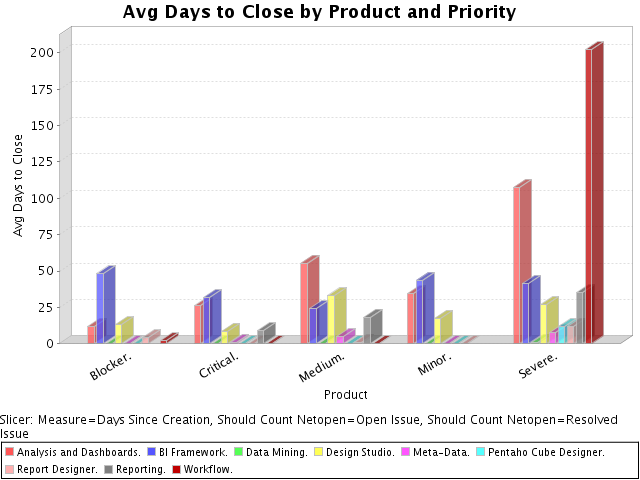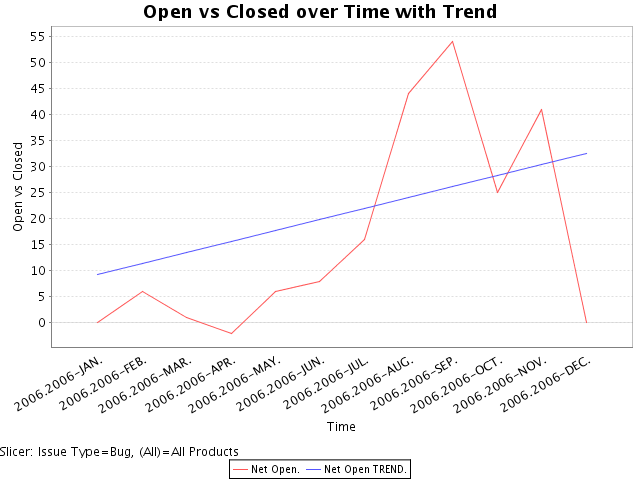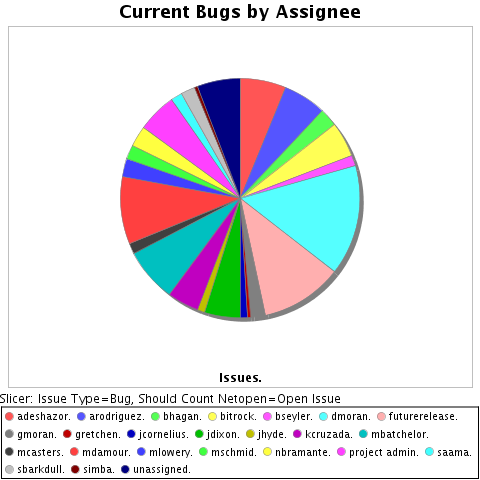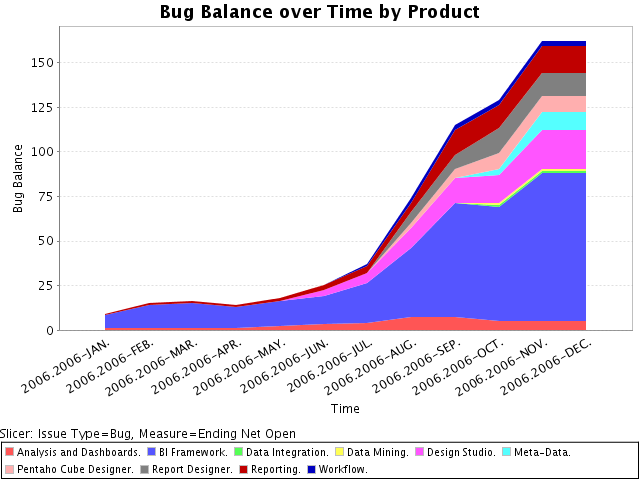From me, to Ross and license-discuss:
Socialtext which wishes to find a resolution for the attribution issue
through the proposal of a Generic Attribution Provision. A copy of
the following message is available in HTML format here:
https://www.socialtext.net/stoss/index.cgi?attribution_memo
I look forward to the conversation,
Ross, as I commented on a ZDNet thread, you’ve earned my respect (not that it matters) by bringing your license to OSI and having a real discussion about UI attribution. I’m one of the critics of UI attribution licenses, but I’m glad someone brought it to place where forced UI attribution can be vetted to OSD in a reasonable manner. I do hope you receive the criticism of this provision in that light.
needs than Linux. These application products could be "lost" in the
larger distributions. The obligations imposed by the attribution
I’m uncertain why copyleft licenses don’t meet the needs for “avoiding larger distrib hiding” without compensation. Where does a license like the GPL not suit your needs? If people are hiding it in their distributions will GPL (even with FOSS exception) not meet your needs?
provision are very similar to the reproduction of legal notices which
are found in virtually all open source licenses.
Attribution in documentation, source, and a splash screen at startup (to date approvals) are not “very similar” to a required use of a trademark that is not owned by the person fulfilling their obligations. Redhat has sent letters to downstream vendors clearing stating their rights to not have their trademarks used. They are quite different (more below).
However, we understand that attribution may cause problems for OSI,
particularly since different companies may have different attribution
notices and may use different "base" licenses (all recent attribution
agreements are based on the MPL).. Socialtext would like to suggest
that OSI consider an "attribution" provision which can be used for any
"modifiable" license.
I think if an attribution provision, limited to be reasonable and in line with previous approvals (docs, splash page, etc) would not be detrimental to the open source effect. I think having it as a general provision would be beneficial in license proliferation and remove objections from these companies just writing their own licenses willy nilly.
Generic Attribution Provision
Redistributions of the [original code] in binary form or source code
form, must ensure that each time the resulting executable program, a
display of the same size as found in the [original code] released by
the original licensor (e.g., splash screen or banner text) of the
original licensor's attribution information, which includes:
(a) Company Name
(b) Logo (if any) and
(c) URLs
IMHO this allows exactly the problem with the current Mozilla Exhibit B going around. This provision allows a “blank check” because HOW the original code attributes determines how prominent or onerous it is. I’m not a player in this (ie, OSI board) but I’ve suggested alternative language below that would limit to more common and appropriate attribution locations. This is similar to what MOST people do currently (in Documentation, About Page if present, etc). Common places to acknowledge the work that contribute to the whole application. Remember the open source effect is TRYING to make multiple open source projects open for reuse in subsequent applications NOT limit those uses.
POSITION STATEMENT
1. Consistent with OSD. Attribution is merely a form of notice which
is consistent with Section 4, the Integrity of the Author's Source
Code, of the Open Source Definition. Virtually every OSI approved
license requires the inclusion of copyright and other legal notices
(and frequently more elaborate information, see below). The
attribution requirement is similar to this notice requirement.
They’re similar in that they are both attribution, but they are quite dissimilar in their burden. Let’s be clear: there is a BIG difference between a note in a splash screen, document and a badge (amount many) on EACH UI screen.
Consider other attribution circumstances: The artist that samples (perhaps even with payment) a Beatles song attributes the original copyright and work in a page inside the CD. Or the inside CD cover, or … The attribution clause proposed this would require the new artist to place Powered by the Beatles(tm) on EVERY customer facing “screen” such as concert posters, CD covers, websites, etc.
Rationale: Encouraging lots of improvement is a good thing, but users
have a right to know who is responsible for the software they are
using. Authors and maintainers have reciprocal right to know what
Let’s say we’re in perfect agreement that no one should try and hide the source of the source, but should users be required to know the hundred or so names of developers that contributed to the Apache web server when they go to a website? Should someone claim they wrote it? No. Should someone remove license copyright notices? No.
they're being asked to support and protect their reputations.
Accordingly, an open-source license must guarantee that source be
readily available, but may require that it be distributed as pristine
base sources plus patches. In this way, "unofficial" changes can be
made available but readily distinguished from the base source.
I don’t think the source is an issue, is it? I’m not sure anyone is saying that there should be no attribution in source files.
2. Already Approved. OSI has approved several licenses which include
attribution, Attribution Assurance License, Open Source License and
the Adaptive Public License, as consistent with the Open Source
Definition.
I wasn’t around for the rationale but I’m guessing they were limited enough i
n scope, as to not limit rights but rather provide modest attribution in appropriate “give credit where credit is due” places. I don’t think they intended approving attribution to dictate a visual logo (advertisement) on EVERY UI screen. Perhaps others can revisit this for the benefit of everyone?
2. Redistributions of the Code in binary form must be accompanied by
this GPG-signed text in any documentation and, each time the resulting
executable program or a program dependent thereon is launched, a
prominent display (e.g., splash screen or banner text) of the Author's
attribution information, which includes:
(a) Name ("AUTHOR"),
(b) Professional identification ("PROFESSIONAL IDENTIFICATION"), and
(c) URL ("URL").
Notice it says launched. ie, notice of copyright NOT a UI banner on each screen.
3. Not a Burdensome Requirement. Some individuals have expressed
concern that attribution requirements will result in products where
the screens are filled with logos. Yet, by their nature, licenses with
attribution will only permit the original licensor to include its logo
since the license cannot be amended by sublicensors. Many open source
Are you saying that multiple UI attribution license can not be combined?
If they can be combined the UI filled with badges could be VERY real if enough people use badgeware. Certainly many of the badgeware applications would look different if the open source projects they used had the same requirement. I counted 18 for Sugar; a testament to how good open source projects can benefit everyone. How many OSI approve licenses does SocialText use? If you send me the list of the projects SocialText used I’m happy to create a mockup of YOUR UI if we live in a badgeware world. You can see what the commercial viability of your software would be if those that came before believe they deserved this same right. Do you have an splash screen or an about page for every END USER of SocialText listing all the COPYRIGHT holders you’ve used? Remember open source projects often have MULTIPLE Copyright holders that might have different attribution clauses. Joe Jimmy from Jersey and Susy Soody from Sarasota could probably have their picture included.
If they can not be combined (can you explain what you mean if I’ve misunderstood) then that seems to be in conflict with OSD; and VERY much against the open source effect. Open Source strives to make it easy for people to reuse code; increases quality and decreases duplicate work. Not being able to combine two licenses that are both OSI approved would be, well, very odd.
4. Applications. The needs of "application" open source software
are different from the more traditional "operating system" open source
software. Application software is frequently distributed by third
parties with other products without any notice to end users; this
I would venture to say that infrastructure OS is more commonly distributed then applications.
By different are you really saying better? Somehow because you are writing code that is geared more towards end users it is worth MORE protection and recognition then everyone else? For instance, the ~7500 lines of code that make “grep” that are used ubiquitously and with great utility; it receives no such place on the UI screen for a web application that is a few simple lines of perl code. In all the code that comes together to display a web page or processing a record or do any number of application things why is the 5% these application companies (some php code) special? Each took $$ and time to make, but somehow an application is special?
I don’t understand… Please do share why widely distributed code built using real developers and real costs ($$) are worth less than what application companies are writing.
possible under open source licenses without attribution. For example,
the incorporation of application programs anonymously into
distributions by large companies could destroy the market for open
source application software.
Again: consider using a copyleft license if you want to prevent this. This force you claim can destroy the market can be mitigated by a license which makes it difficult, if not impossible to embed. Why does GPL not meet this need?
5. Part of a Larger Problem. Some individuals have expressed
concern that the attribution licenses are not approved by OSI. Yet,
many other modifications of open source licenses have not been
approved by OSI, such as FOSS and Affero. OSI should address the
entire problem or can be accused of selective enforcement.
Preaching to the choir here. The OSI reviews license. They won’t review license that aren’t submitted by original authors. SO… There’s no selective enforcement. It’s a community thing. People like me applying pressure to companies claiming to be open source but have not passed the de facto vetting to the definition of open source.
6. Community Acceptance. These licenses are used by Socialtext,
Zimbra, Alfresco, Qlusters and SugarCRM. Yet their communities have
not expressed objections to this requirement. Many of these companies
are building business models which include distribution by third
parties so the distributors do not have a problem with this approach.
Hey, Shareware with no expiration date is “beer” software. I’m not sure you’d hear people complaining about receiving free to use software. Oracle gives away a version of it’s database; the Oracle community isn’t complaining about that. Calling it open source, and the connotation that it has freedoms in USE is different. Microsoft Communities will sing the laurels of their benefactor. Doesn’t mean it’s accepted by an open source community because people like the software you let them run for free.
Are any of these downstream distributors able to legally use your trademarks in the distribution without some understanding or agreement from you? All is fine and dandy when blessed by parties with a business arrangement. Can a competitor use your code and trademark legally you have no recourse to stop them?
7. Consistent with Creative Commons. Creative Commons includes
"attribution" as one of the key decisions that need to be addressed in
using their licenses.
Creative Commons is applied in proper places. ie, a note in a post etc. If I quote from a creative commons piece I have to make a note of it somewhere. I don’t have to place their logo on my entire website.
8. Not BSD Advertising Requirement. An attribution requirement is
not similar to the "advertising" requirement. It does not impose
"vague" requirements to mention the Berkeley Software Distribution in
undefined "advertising". On the contrary, it is very specific and easy
to understand and comply with.
Well, I think the original Exhibit B is actually MORE specific than the proposed Attribution Provision. As onerous as it may be, it at least spells out the pixel size so it’s CLEAR the impact that each combined license will have. This requirement leaves it up to the original author how onerous the provision is (pixel size, watermarks, etc).
I’d like to suggest an alternative attribution provision that provides the same “attribution to the user” but is much less onerous. I’m no attorney so I’m perfectly willing to let it be wordsmithed by anyone on this list. I disagree with it, but suggest it as a useful compromise and for discussion. I’m a strong critic of UI attribution and something like the following would remove most of my objections (not that my objections are any more or less valuable than anyone elses):
Generic Attribution Provision
Redistributions of the original code in binary form or source code form, must ensure that each time the resulting executable program, a display of items (a),(b),(c) released by the original licensor on a splash screen or about page of the original licensor’s attribution information if such a splash screen or about page is present in redistribution, which includes:
(a) Company Name
(b) Logo (if any) and
(c) URL
Original Licensor grants limited use of Trademark and Logo as necessary to fulfill obligations of this provision.
Note: the “diffs” are clearer in HTML on my blog should anyone wish to review it there.
http://www.nicholasgoodman.com/bt/blog/2006/11/27/compromise-attribution-rider-on-any-osi-license/
Kind Regards,
Nick



